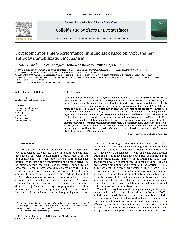摘要
Rabbit anti-human ferritin (anti-hFT) polyclonal immunoglobulin G (IgG) and poly(ethylene glycol) (PEG) were sequentially co-immobilized onto polystyrene submicroparticles (sMPs) to construct sMP/anti-hFT/PEG (SAP) immunolatex. Chemical immobilization of anti-hFT was performed at different pH levels to evaluate variations in antigen recognition. Basic pH disfavored conjugation of anti-hFT to sMPs, but remarkably increased its antigen recognition in comparison to that at neutral pH. We investigated this intriguing phenomenon further by assessing the kinetics of antibody binding, including the time-dependency of immobilization, antigen recognition, and orientation of bound anti-hFT. Therefore, we attributed high antigen recognition to significant electrostatic repulsion between sMPs and anti-hFT at basic pH, which predominately prevented anti-hFT access to sMPs and concurrently promoted anti-hFT orientations suitable for antigen recognition. Subsequent PEG modification maintained such anti-hFT orientation, without which antigen-accessible orientations would have decreased with time. Thus, properly oriented antibody and immediate PEGylation after antibody immobilization contributed to the formation of a high-performance SAP immunolatex.
- 出版日期2012-11-1
